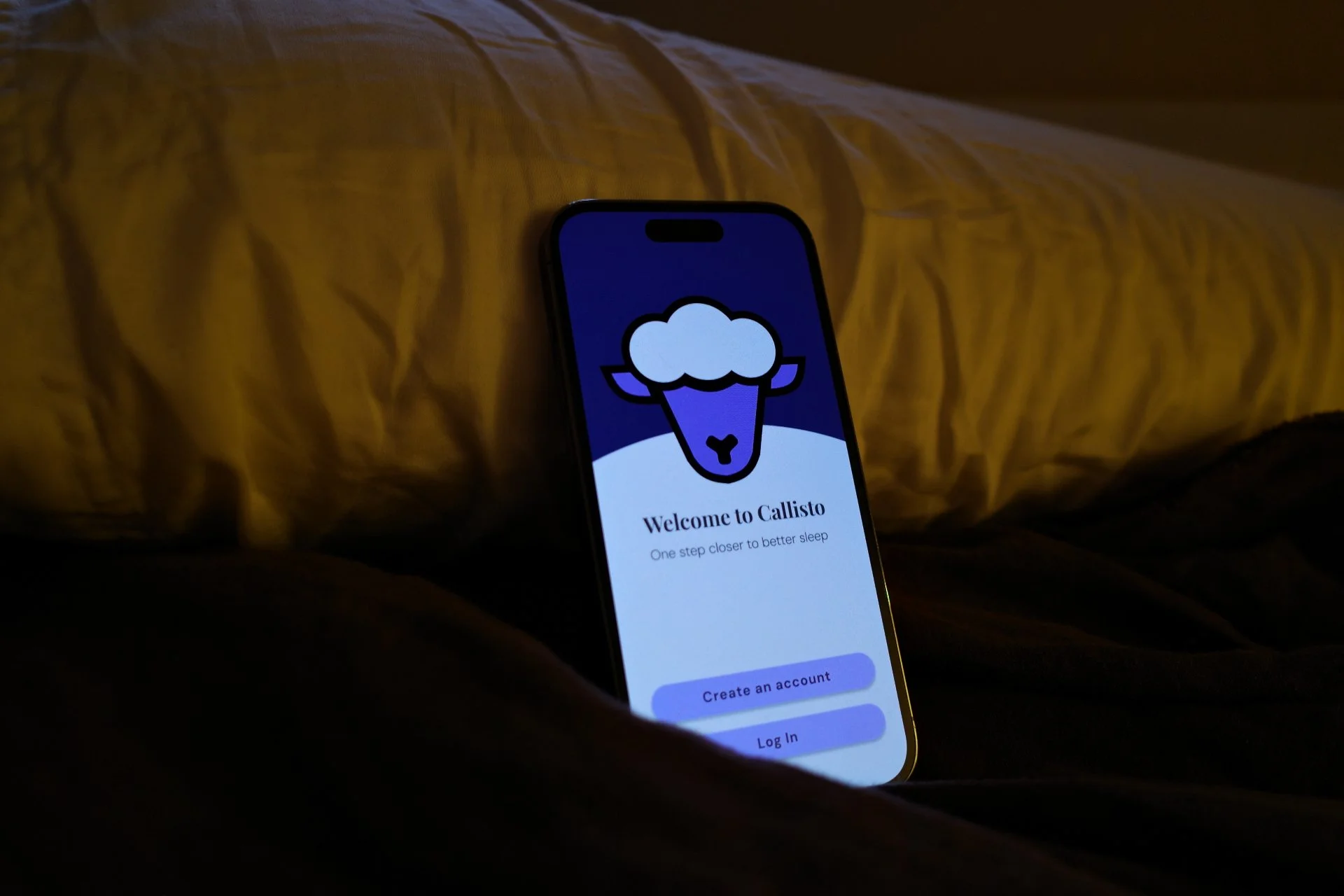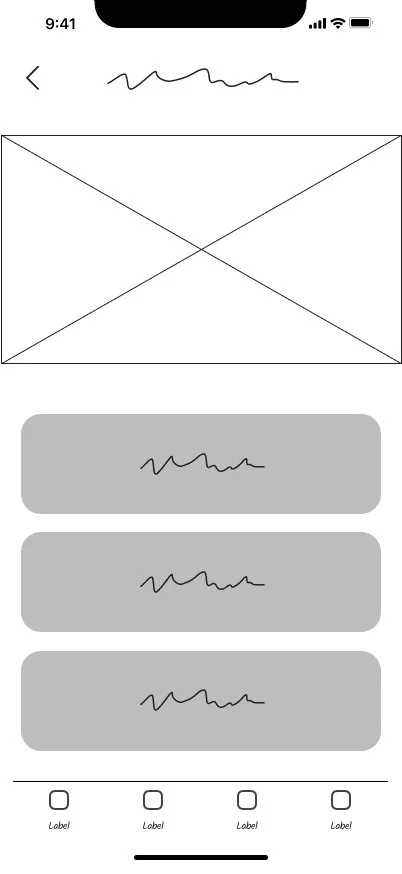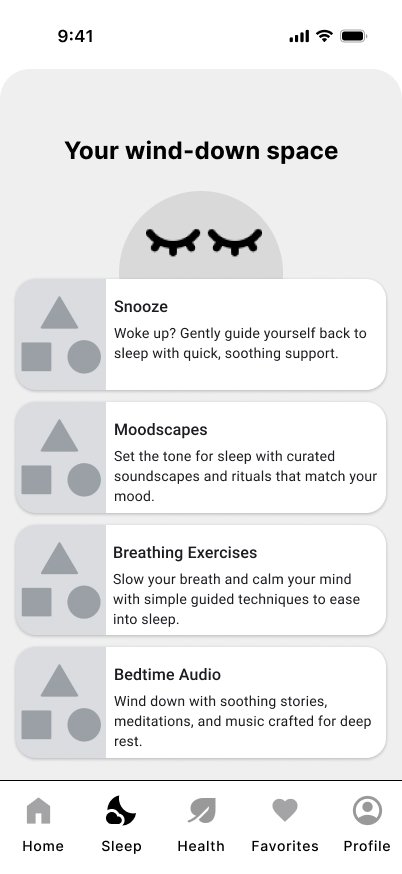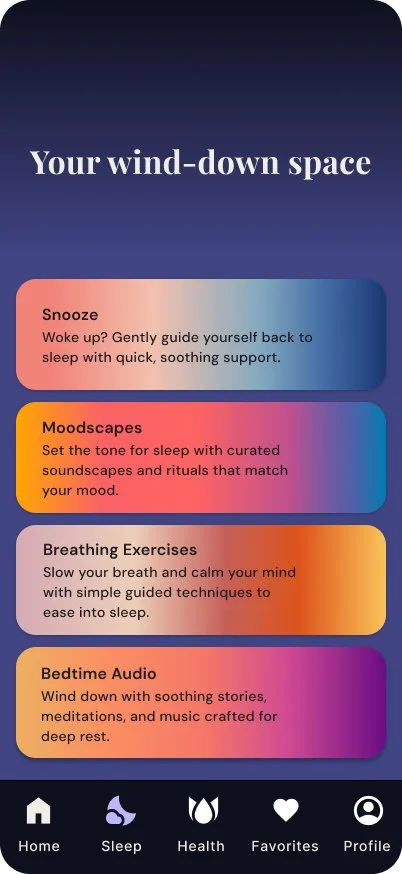
Callisto is a conceptual sleep wellness app designed to address the rising challenge of inconsistent and poor-quality sleep. I designed Callisto for four primary personas: a remote-working night owl, an overworked college student, a perfectionist educator, and a stay-at-home parent. This diverse range reflected common barriers such as stress, guilt, schedule chaos, and overstimulation. A more emotionally attuned and thoughtfully designed sleep tool could help these users develop small, sustainable rituals which in return would help them rest better and feel in control again. This project took 6 weeks, and I was the sole end-to-end UX/UI designer, responsible for research, branding, design, and testing.
-
To understand the problem deeply, I conducted a mix of qualitative and quantitative research. I began with a user survey that received 47 responses, gathering data on sleep habits, tool usage, and emotional pain points. I followed this with 6 remote and in person interviews to dive into personal stories, daily obstacles, and emotional triggers.
Some interview questions included:
Can you describe your sleep environment?
How often do you experience sleep-related issues like trouble falling asleep or staying asleep?
Do these issues happen daily, weekly, or only occasionally?
How do these issues impact your overall well-being during the day (e.g., mood, energy levels, work productivity)?
Have you ever used an app or product to help with sleep? Why did you stop or stick with it?
Do you practice any sleep hygiene habits (e.g., avoiding caffeine before bed, winding down, limiting screen time)?
Key insights included:
50% reported that they had never used a sleep tool despite poor sleep.
Users consistently named stress, anxiety, work schedules, and caffeine as key reasons for poor sleep—not just bad bedtime habits.
Sleep cannot be isolated from emotional and lifestyle factors. A routine-focused solution will only go so far without supporting the bigger picture.There’s a motivation–action gap. Users recognize the problem but feel unsure where to begin or don’t believe solutions will work for them.
Users felt overwhelmed by apps with too many features or “performance-tracking” mentalities.
-
I took an iterative approach starting with broad concepts, refining through research and sketching, then cycling through feedback and updates.
Key deliverables included:
User personas
A sitemap focused on intuitive navigation to two MVP Features.
A problem statement and HMW framework to prioritize emotional design goals
-
The visual identity of Callisto emerged through exploration of softness, lunar symbolism, and minimalism. I sketched and wireframed multiple versions of the homepage, audio player, and breathing features before refining the flow.
Branding: I created a wordmark, a sheep icon, and a calming UI kit rooted in night-friendly tones.
Color Palette: Navy, lilac, and cream were selected for contrast, calm, and accessibility at night.
Final Deliverables:
Low - to high-fidelity wireframes (1a-c, 2a-c)
Clickable prototype in Figma
Visual brand guidelines, typography system, and logo sheet
My favorite part was shaping the "Moodscapes" feature, a choose-your-emotional-state entry point, because it allowed creativity, emotional intelligence, and user autonomy to meet beautifully.
-
I conducted testing with 5 participants to evaluate how easily and intuitively users can complete tasks within the prototype. This study focuses on observing participants as they complete specific flows to identify usability issues, gauge the clarity of the interface, and collect user-reported feedback.
Testing was done remotely using Zoom and in person. I observed participants interacting with the prototype, noting confusion, delight, and hesitation.
Results showed that users were easily able to navigate Callisto to complete tasks given.
Wireframes
2a
1a
Conclusion
1b
2b
1c
2c
Callisto taught me that designing for emotional well-being requires more than good flows. It demands empathy, simplicity, and invitation. One challenge I faced was balancing poetic branding with UX clarity, but testing helped resolve this tension. I learned how to balance feature richness with user overwhelm, and how emotional design can be just as impactful as functional design. If I could do one thing differently, I would recruit more non-tech-savvy testers earlier on. Next steps could include integrating sleep data tracking in a non-judgmental way, expanding the Moodscapes library, or conducting long-term habit formation studies.
I’m most proud of how intentional and emotionally resonant Callisto became. It represents the kind of product I want to keep designing: compassionate, creative, and quietly powerful.






